
Phongsaly Province: A Hidden Gem in the Highlands of Laos
Discover the untouched beauty and cultural richness of Phongsaly Province, a secluded paradise in the highlands of northern Laos.
Phongsaly Province, located in the far north of Laos, is a destination that takes you off the beaten path. This mountainous region is known for its stunning landscapes, rich cultural heritage, and serene atmosphere. The province remains relatively undiscovered by mainstream tourists, which means you can enjoy its natural beauty and traditional way of life without the crowds. One of the highlights of Phongsaly is the eponymous capital, Phongsaly Town, which sits high in the mountains and offers breathtaking views of the surrounding valleys. The town is home to a mix of ethnic groups, including the Phunoy, Akha, and Tai Lue, each with their unique customs and traditions. Visitors can explore the local markets, sample traditional foods, and visit the ancient tea plantations that have been producing tea for centuries. For nature lovers, Phongsaly offers numerous trekking opportunities through lush forests, terraced rice fields, and remote villages. The Phu Den Din National Protected Area is a must-visit for its diverse flora and fauna, including rare species of birds and mammals. The cool climate of the highlands makes it an ideal destination for those looking to escape the tropical heat of lower altitudes. Whether you are looking to immerse yourself in the local culture, enjoy outdoor adventures, or simply relax in a peaceful setting, Phongsaly Province has something to offer every traveler. Its unspoiled beauty and warm hospitality will leave a lasting impression on anyone who visits.
Local tips in Phongsaly Province
- Pack warm clothing as temperatures can be cooler in the highlands, especially in the evenings.
- Hire a local guide for trekking to ensure you get the most out of your experience and support the local community.
- Visit the local markets early in the morning to see the freshest produce and interact with the local people.
- Respect local customs and traditions, especially in ethnic minority villages.
- Try the locally produced Phongsaly green tea, which is a specialty of the region.
Phongsaly Province: A Hidden Gem in the Highlands of Laos
Phongsaly Province, located in the far north of Laos, is a destination that takes you off the beaten path. This mountainous region is known for its stunning landscapes, rich cultural heritage, and serene atmosphere. The province remains relatively undiscovered by mainstream tourists, which means you can enjoy its natural beauty and traditional way of life without the crowds. One of the highlights of Phongsaly is the eponymous capital, Phongsaly Town, which sits high in the mountains and offers breathtaking views of the surrounding valleys. The town is home to a mix of ethnic groups, including the Phunoy, Akha, and Tai Lue, each with their unique customs and traditions. Visitors can explore the local markets, sample traditional foods, and visit the ancient tea plantations that have been producing tea for centuries. For nature lovers, Phongsaly offers numerous trekking opportunities through lush forests, terraced rice fields, and remote villages. The Phu Den Din National Protected Area is a must-visit for its diverse flora and fauna, including rare species of birds and mammals. The cool climate of the highlands makes it an ideal destination for those looking to escape the tropical heat of lower altitudes. Whether you are looking to immerse yourself in the local culture, enjoy outdoor adventures, or simply relax in a peaceful setting, Phongsaly Province has something to offer every traveler. Its unspoiled beauty and warm hospitality will leave a lasting impression on anyone who visits.
When is the best time to go to Phongsaly Province?
Iconic landmarks you can’t miss
Phongsaly museum of ethnic groups
Explore the Phongsaly Museum of Ethnic Groups to experience the rich cultural heritage and diverse traditions of Laos' ethnic communities.

Phongsaly Tourists Information
Explore the enchanting Phongsaly region with essential insights from the Tourist Information Center, where adventure and culture await in Laos.

Unmissable attractions to see
ນ້ຳກັດຍໍລະປາ - NumKatYorLaPa
Experience the thrill of adventure at NumKatYorLaPa, a top tourist attraction in Ban Cat, Laos, featuring zip lines, quad biking, and stunning natural beauty.

Phachao Singkham Temple
Experience the serenity and rich cultural heritage of Phachao Singkham Temple, a must-visit Buddhist sanctuary in the heart of Muang La, Laos.
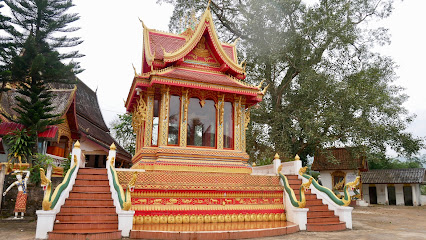
Phou Den Din National Biodiversity Conservation Area
Explore the diverse ecosystems and wildlife of Phou Den Din National Biodiversity Conservation Area, a natural paradise in Laos.

Phanoi Viewpoint
Discover the stunning Phanoi Viewpoint in Muang Ngoy, a breathtaking natural attraction perfect for photography and serene escapes amidst lush landscapes.

Ban Na village
Explore the enchanting Ban Na Village in Laos, where traditional culture meets stunning natural beauty, creating an unforgettable travel experience.
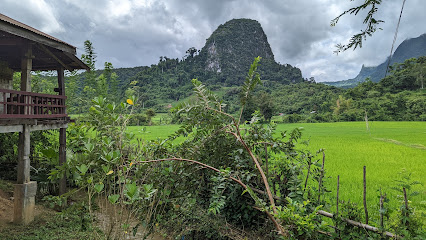
Phu Fa ພູຟ້າ
Explore the breathtaking landscapes and tranquil ambiance of Phu Fa, a hidden gem in Phongsali, Laos, perfect for nature lovers and adventurers.

Huay Bo Village
Experience the serene beauty and rich culture of Huay Bo Village, a hidden treasure in Laos perfect for an authentic escape.

Chom Ong Cave | ຖຳ້ຈອມອອງ
Discover the stunning beauty of Chom Ong Cave, a natural wonder boasting breathtaking limestone formations and serene surroundings in Ban Ka Lang Khouang.

Tailue Handicrafts ຫັດຖະກຳ ໄຕລື້
Discover the beauty of Laos at Tailue Handicrafts, where local artistry meets cultural heritage in a vibrant shopping experience.

ຕູບແຄມນ້ຳ ຫາດຫົກ ດອນມິຖຸນາ
Explore the enchanting Muang La, a cultural gem in Laos where stunning landscapes and rich traditions await every traveler.

Viewpoint
Discover the breathtaking trails and stunning cave formations at Phanai Cave Trail in Muang Ngoy, a hidden gem for nature lovers and adventure seekers.

Huay San Village
Experience the serene beauty and rich culture of Huay San Village, a hidden gem in Laos perfect for an authentic travel adventure.
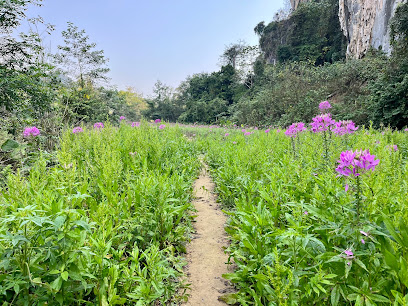
Muang Khua viewpoint
Discover the breathtaking beauty of Muang Khua Viewpoint in Laos, a must-visit for nature lovers and photography enthusiasts seeking stunning landscapes.

#ວົງວຽນຜົ້ງສາລີ #Circle center of the town
Experience the tranquil beauty of Phongsali's Circle Center, a vibrant garden oasis in the heart of town, perfect for relaxation and cultural immersion.

ຖ້ຳມົກແຝກ Mok Faek Cave
Explore the breathtaking Mok Faek Cave in Laos, a natural wonder with stunning limestone formations and serene surroundings ideal for adventure seekers.
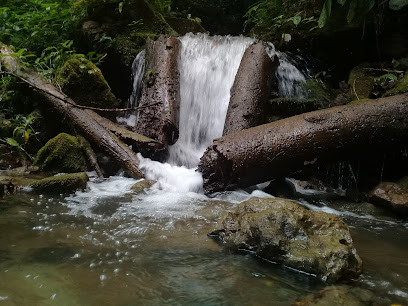
Markets, malls and hidden boutiques
GAEBI
Explore GAEBI in Luang Prabang for exquisite handicrafts, cultural events, and a unique shopping experience that showcases Laos' rich heritage.

Pathana Boupha Antique House
Explore the rich heritage of Laos at Pathana Boupha Antique House, where history and craftsmanship come together in a charming antique store.

Boun Neua laos supermarket
Experience the vibrant local culture at Boun Neua's supermarket, where fresh produce and regional delicacies await your discovery.

T-mart PSL
Experience the vibrant culture of Boun Neua at T-mart PSL, a shopping mall where local flavors and unique finds await every traveler.

Sone lao coffee shop
Discover the tranquil charm of Sone Lao Coffee Shop in Phôngsali, where rich Lao coffee meets stunning natural beauty.

shengyu supermarket
Experience the vibrant essence of Boun Neua at Shengyu Supermarket, where local culture meets everyday shopping in Laos.

Tea Shop Koui Ing
Discover the tranquil charm of Tea Shop Koui Ing in Phôngsali, where exquisite teas and local culture meet in a cozy setting.

Phongsaly Province Products Shop(ODOP)
Experience the essence of Phongsaly through local products at ODOP Products Shop, a grocery store showcasing authentic flavors and crafts.

Phongsaly museum of ethnic groups
Explore the Phongsaly Museum of Ethnic Groups to immerse yourself in the rich cultural heritage and diversity of Laos's ethnic communities.

ຮ້ານຂາຍແລະສ້ອມແປງໂທລະສັບ Bien mobile
Explore cutting-edge technology and exceptional service at Bien Mobile, the leading electronics store in Boun Neua for all your mobile needs.
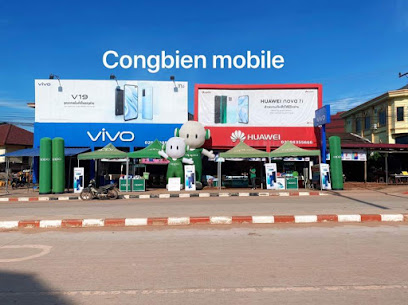
Minimart
Discover Minimart in Muang Khua: your go-to grocery store for local snacks and essentials while exploring the beauty of Laos.
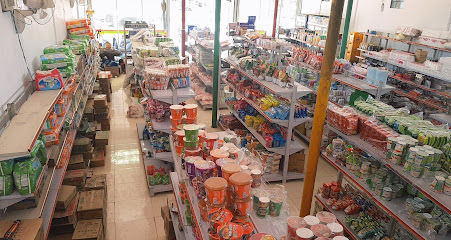
ຮ້ານ789 ລ້ອງນາຍ
Explore the local flavors at ຮ້ານ789 ລ້ອງນາຍ, a cozy beer store in Ban Laosen offering a great selection of brews in a welcoming atmosphere.

ຮ້ານ ນ.ມີ
Discover the essence of Lao cuisine at ຮ້ານ ນ.ມີ, Muchi's vibrant grocery store filled with local flavors and culinary treasures.

ຮ້ານ ຂາຍເຄື່ອງຍ່ອຍ (ບຸນໄຊຫມອນ)
Discover a treasure trove of local goods at ຮ້ານ ຂາຍເຄື່ອງຍ່ອຍ (ບຸນໄຊຫມອນ), your gateway to authentic Laotian flavors in Ban Chicho.

Roadside grocery store
Explore the local charm at this roadside grocery store, a must-visit for authentic products and delightful snacks during your travels.

Essential bars & hidden hideouts
ຮ້ານອາຫານໜອງຂຽວ
Experience the authentic taste of Laotian cuisine at ຮ້ານອາຫານໜອງຂຽວ, where local flavors come to life in the heart of Phôngsali.

ຮ້ານສາຍລົມເຢັນ (ບັນເທີງ ແລະ ກິນດື່ມ)
Experience the rich flavors of Lao cuisine at ຮ້ານສາຍລົມເຢັນ in Phôngsali, where each dish tells a story of culture and tradition.
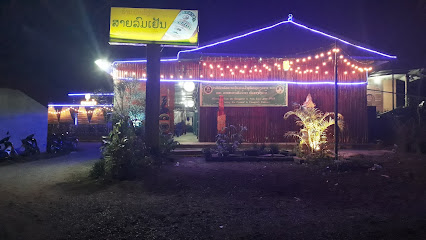
Faenmai Food and Drink
Experience the authentic flavors of Laos at Faenmai Food and Drink, a hidden gem in Phôngsali offering delightful culinary experiences.

Laoper Restaurant
Savor authentic Laotian flavors in the cozy ambiance of Laoper Restaurant, a culinary delight in Phôngsali, perfect for every food lover.

ຮ້ານເອັມທູເຄ (M2K) ບ.ນ້ຳລີ
Experience the lively spirit of karaoke at M2K Karaoke Bar in Ban Nam Li, where music, fun, and local culture unite for an unforgettable night out.

Chinese Snack Bar
Experience the vibrant flavors of Hong Kong-style fast food at the charming Chinese Snack Bar in Phôngsali, a culinary gem in Laos.

ເພື່ອນມິດ
Discover the authentic flavors of Laos at ເພື່ອນມິດ, a must-visit restaurant in Phôngsali for an unforgettable culinary journey.

Nok Restaurant
Discover the authentic flavors of Laos at Nok Restaurant in Phôngsali, where traditional cuisine meets warm hospitality.

ສຸລິພົນ
Experience the vibrant local culture at Suli Phon, Muang Khua's premier bar offering a unique selection of drinks and a welcoming atmosphere.

Ponesith Restaurant
Discover the authentic flavors of Laos at Ponesith Restaurant, a must-visit dining spot in Phôngsali offering traditional dishes in a cozy atmosphere.

The SomView Restaurant
Experience the best of Asian cuisine at The SomView Restaurant in Phôngsali, where every meal is a cultural journey.

Cool breeze
Experience tranquility and refreshment at Cool Breeze, the perfect bar retreat in Muang Khua, Laos, where nature meets relaxation.

ລີສອດ ນ້ຳອູ Nam Ou Resort
Experience tranquility at Nam Ou Resort, a serene bar in Muang Khua, surrounded by stunning natural beauty and perfect for relaxation.

ຮ້ານອາຫານຊົມວິວ
Unwind at ຮ້ານອາຫານຊົມວິວ, the perfect bar in Phôngsali to experience local drinks and warm Lao hospitality.

ບ້ານຽິຣ
Experience the vibrant social scene at ບ້ານຽິຣ in Muang Khua, where every sip tells a story and every visit is an adventure.

Local Phrases about Phongsaly Province
-
- HelloSabaidee
[Sa-ba-dee] - GoodbyeLa kon
[La kon] - YesJao
[Jao] - NoBo
[Bo] - Please/You're welcomeKhoi
[Khoi] - Thank youKhob chai
[Khob chai] - Excuse me/SorryKhoi thaleuh
[Khoi tha-leuh] - How are you?Sabaidee baw
[Sa-ba-dee baw] - Fine. And you?Nakha, baw baw?
[Nak-ha, baw baw?] - Do you speak English?Khun pood pasa angkrit dai bo?
[Khun pood pasa ang-krit dai bo?] - I don't understandKhoi bo khao jai
[Khoi bo khao jai]
- HelloSabaidee
-
- I'd like to see the menu, pleaseKhoi yak khin khan baw
[Khoi yak khin khan baw] - I don't eat meatKhoi mai kin neua
[Khoi mai kin neua] - Cheers!Sok dee!
[Sok dee] - I would like to pay, pleaseKhoi yak thanh baw
[Khoi yak thanh baw]
- I'd like to see the menu, pleaseKhoi yak khin khan baw
-
- Help!Chuay!
[Chuay!] - Go away!Pai!
[Pai!] - Call the Police!Houay kot sat
[Houay kot sat] - Call a doctor!Houay kot bai
[Houay kot bai] - I'm lostKhoi haw khon
[Khoi haw khon] - I'm illKhoi baw
[Khoi baw]
- Help!Chuay!
-
- I'd like to buy...Khoi yak sot...
[Khoi yak sot...] - I'm just lookingKhoi khen khin
[Khoi khen khin] - How much is it?Angh neung lo?
[Angh neung lo?] - That's too expensiveLaos phaeng
[Laos phaeng] - Can you lower the price?Kun laang sin lo duay bo?
[Kun laang sin lo duay bo?]
- I'd like to buy...Khoi yak sot...
-
- What time is it?Tham nida bang ma?
[Tham nida bang ma?] - It's one o'clockKhong een neung
[Khong een neung] - Half past (10)Khong sip pak khan
[Khong sip pak khan] - MorningSang wan
[Sang wan] - AfternoonThiang wan
[Thiang wan] - EveningYa wan
[Ya wan] - YesterdayMeua
[Meua] - TodayMa
[Ma] - TomorrowPrao
[Prao] - 1Neung
[Neung] - 2Song
[Song] - 3Sam
[Sam] - 4Si
[Si] - 5Ha
[Ha] - 6Hok
[Hok] - 7Jet
[Jet] - 8Paet
[Paet] - 9Kao
[Kao] - 10Sip
[Sip]
- What time is it?Tham nida bang ma?
-
- Where's a/the...?Nyai...
[Nyai...] - What's the address?Tham nee thi nai?
[Tham nee thi nai?] - Can you show me (on the map)?Kun hian khon khong khoi dai bo?
[Kun hian khon khong khoi dai bo?] - When's the next (bus)?Nya baw khon khuam song?
[Nya baw khon khuam song?] - A ticket (to ....)Thang khan (pa ....)
[Thang khan (pa ....)]
- Where's a/the...?Nyai...
History of Phongsaly Province
-
Phongsaly Province has been inhabited for thousands of years, with evidence of early settlements dating back to prehistoric times. The region is home to various ethnic groups, including the Akha, Khmu, and Tai Lue, who have contributed to its rich cultural tapestry. These communities have preserved their traditional ways of life, customs, and languages, making Phongsaly a living museum of ancient heritage.
-
In the 14th century, the Tai Lue people established their own kingdom in what is now Phongsaly Province. Their capital, Muang Sing, became an important center of trade and culture. The Tai Lue brought agricultural innovations, intricate weaving techniques, and Buddhist practices that continue to influence the region today. Temples and stupas from this era still stand, offering glimpses into the Tai Lue's spiritual and architectural legacy.
-
The late 19th and early 20th centuries saw Phongsaly Province fall under French colonial rule as part of French Indochina. The French influence is evident in the colonial architecture that dots the provincial capital, Phongsaly Town. During this period, the French developed infrastructure and introduced new crops, such as coffee and tea, which remain important to the local economy.
-
During the Vietnam War, Phongsaly Province was a strategic area due to its proximity to the Ho Chi Minh Trail. The region was heavily bombed by US forces in an effort to disrupt North Vietnamese supply lines. The aftermath of this conflict left a lasting impact on the local population and landscape. Today, unexploded ordnance (UXO) remains a danger in some areas, and efforts to clear these remnants continue.
-
Following Laos' independence in 1975, Phongsaly Province began to rebuild and develop its economy. The Lao government has focused on improving infrastructure, healthcare, and education in the region. Agriculture remains the mainstay of the local economy, with tea plantations, rice paddies, and coffee farms playing significant roles. The province has also seen an increase in tourism, driven by its unique cultural heritage and natural beauty.
-
Phongsaly Province is renowned for its vibrant cultural festivals and traditions. One of the most significant events is the Boun That Luang Festival, celebrated with colorful parades, traditional music, and dance. The New Year celebrations of various ethnic groups, such as the Akha Swing Festival and the Khmu New Year, offer visitors a chance to experience the rich cultural diversity of the province. These festivals provide a window into the spiritual and communal life of Phongsaly's inhabitants.
Phongsaly Province Essentials
-
Phongsaly Province is located in the northernmost part of Laos. The nearest international airport is Wattay International Airport in Vientiane. From Vientiane, you can take a domestic flight to Luang Prabang, and then travel by road to Phongsaly. The journey from Luang Prabang to Phongsaly typically takes around 10-12 hours by bus or minivan, with several scenic stops along the way. Alternatively, you can take a bus directly from Vientiane to Phongsaly, but be prepared for a long journey of approximately 24 hours.
-
Within Phongsaly Province, local transportation options include tuk-tuks, motorbikes, and songthaews (shared pick-up trucks). For more flexibility, consider renting a motorbike, which is a popular choice for exploring the remote and mountainous areas. Be mindful that road conditions can be challenging, especially during the rainy season. There are also local buses that connect different towns and villages within the province.
-
The official currency in Laos is the Lao Kip (LAK). Credit cards are not widely accepted in Phongsaly Province, so it is advisable to carry sufficient cash. ATMs are available in larger towns, but they may not be reliable, so it is best to withdraw enough cash in larger cities like Vientiane or Luang Prabang before traveling to Phongsaly. US dollars and Thai baht are sometimes accepted, but it is safer to use the local currency.
-
Phongsaly Province is generally safe for tourists, but it is important to take standard precautions. Avoid walking alone at night in unfamiliar areas and keep an eye on your belongings in crowded places. While the province does not have specific high-crime areas targeting tourists, it is always best to stay vigilant and aware of your surroundings. Be cautious when traveling on remote roads, especially during the rainy season.
-
In case of emergency, dial 1191 for immediate assistance. Phongsaly has a local police station and a few medical facilities, but they may be limited in terms of equipment and expertise. It is highly recommended to have travel insurance that covers medical emergencies. For minor health issues, there are pharmacies in the main towns where you can purchase over-the-counter medications. In serious cases, you may need to travel to a larger city for more comprehensive medical care.
-
Fashion: Do dress modestly, especially when visiting religious sites. Avoid wearing revealing clothing. Religion: Do respect local customs and traditions. Always remove your shoes and cover your shoulders when entering temples. Public Transport: Do be respectful and give up your seat to elderly passengers. Don't eat or drink on public transport. Greetings: Do greet people with a slight bow and the traditional 'nop' gesture (palms pressed together in front of the chest). Eating & Drinking: Do try local delicacies and accept food offerings graciously. Don't refuse hospitality, as it is considered impolite.
-
To experience Phongsaly Province like a local, visit the morning markets where you can buy fresh produce and traditional Lao goods. Engage with locals, as they are often friendly and willing to share stories about their culture and history. Don't miss visiting the tea plantations, which are a significant part of the local economy. For a unique experience, trek to remote ethnic minority villages and learn about their traditional way of life. Always ask for permission before taking photographs of people.
Nearby Cities to Phongsaly Province
-
Things To Do in Sapa
-
Things To Do in Luang Prabang
-
Things To Do in Xieng Khouang
-
Things To Do in Phonsavan
-
Things To Do in Vang Vieng
-
Things To Do in Chiang Rai
-
Things To Do in Nan
-
Things To Do in Hanoi
-
Things To Do in Vientiane
-
Things To Do in Chiang Mai
-
Things To Do in Loei
-
Things To Do in Pai
-
Things To Do in Udon Thani
-
Things To Do in Ha Long
-
Things To Do in Thakhek











